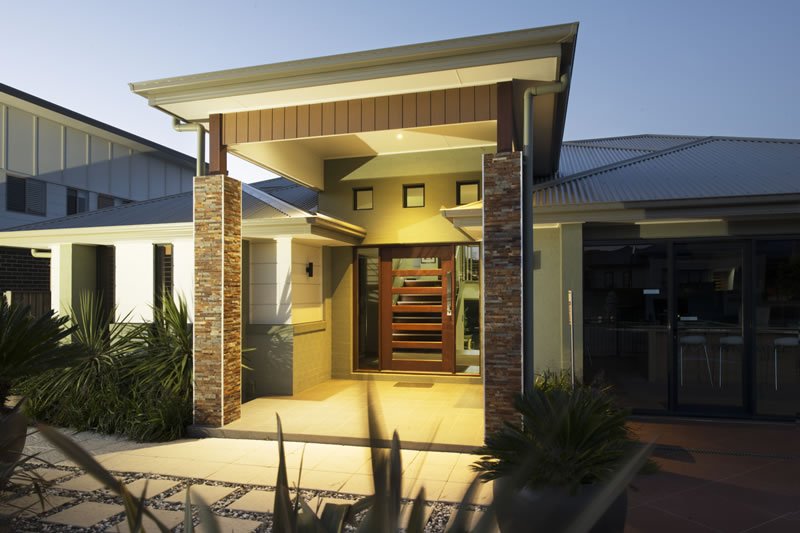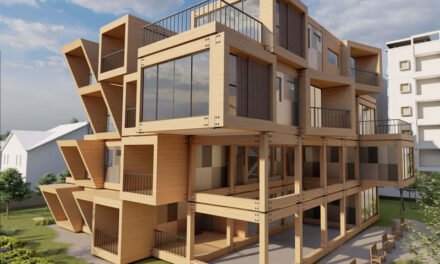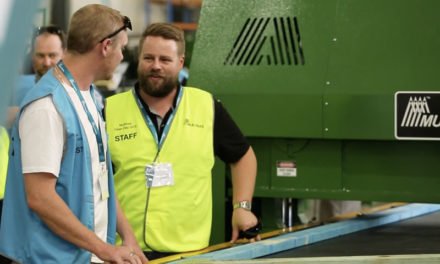Windows and doors are more than just practical elements, they set the scene for a house. Timber’s ability to adapt to any role makes it the ideal choice for a room’s starring parts.
Australian home buyers and renovators juggle a complex matrix when deciding on finishing details such as windows and doors. On the one hand they have the traditional quandries: looks, price, ease of upkeep. On the other hand are a range of environmental issues: insulation against the extreme weather across much of the country, noise-proofing for our increasingly urban areas, and fire risk in many regions.
It’s an area where local manufacturers have come to the fore, with manufacturers providing both an extensive range and complex product details on each item to the market. This comprehensive offer in terms of both design and technology has required a degree of manufacturing innovation and marketing cleverness, with various companies playing to different strengths.
Why wood?
Victorian-based Valley Windows works in both aluminium and timber for its product range. “The different materials suit different jobs,” says Colin Sharples, general manager, but he’s a big fan of the more natural option.
“Timber has a lovely grain and more generous proportions. When you’re trying to sell a house, people walk in and they get a feel about it from hundreds of subtle things, and the warmth of timber is one of those attractive elements.”
While he sees a lot of developers still focusing on aluminium, few owner/builders or renovators choose a single option. “There was a time when people would just go for a job lot of one material, but things have changed in recent years,” Sharples says. “Now it’s very common to have a mix. Alfresco areas have become a huge part of builds in the last 10 or so years – you have houses with a generous living and kitchen area leading straight out into an alfresco area and big deck. Even in a house with aluminium everywhere else, they’ll put a timber stacking door there: it warms the area up.
“In other homes, you might have the living room, kitchen and other entertaining areas with big timber doors and windows, all connecting to the outside. There’s a lot of money spent in this whole area. Then you get to the blind side of the house, where there’s a laundry and a toilet and a bathroom and this is where people bring in the aluminium.”
For many, it’s an easy way to compromise on costs and upkeep. Sharples does remind buyers that cost differences can evaporate with the higher energy efficiency of timber and that people often have flawed beliefs about the comparative effort required for aluminium and timber windows.
“You still need to maintain aluminium,” he says. “A lot of people worry about having to paint and repaint timber, but they forget the benefits of this. In 10 years’ time they’re likely to spend a whole lot of money redoing their kitchen and, if you’ve bought aluminium windows, you can’t actually do too much to them, whereas if you bought timber, you can repaint them to a different colour. So it’s a very cheap renovation that will change the whole inside or outside.”
Market focused
The ability to craft timber into an enormous range of shapes and finishes is often the clinching argument in its use. More than any other material, it’s capable of adapting to fit a specific architectural style or renovation trend. Family-owned Hume Doors & Timber has over 65 successful years of supplying the Australian and New Zealand markets and has seen a lot of different home styles over the decades.
“We keep an eye on market trends and always try to be in front of them,” says Amanda Pearce, Hume marketing assistant. “Because our core range is so broad, there’s often already a product there to suit a new trend, perhaps just needing us to tweak the colour, but we also bring out new ranges or new options within ranges regularly.”
Some styles, such as the Newington Entrance range and Moulded Panel internal range, have been around for many years. “The Newington remains popular because it looks good on so many different styles of home,” Pearce says.
And then there’s the recent movement to barn doors, such as the country-look Frontier Barn Door and its subtler cousin, the Evolution cavity-unit door, which slides away into walls. “This type of door is very on trend,” says Pearce “It’s everywhere in reno shows at the moment, partly because it’s very adaptable to different situations. If you have an open-plan type home you can use it to close off an area that’s usually open to make a private media room, for example. Trends in doors tend to have practical elements, not just style.”
With such comprehensive stock offerings, companies like Hume need to be able educate builders and buyers about both the range and the installation and fitting technology available. They use three major paths: an engaged and informed marketing department; a swathe of national retailers who are trained thoroughly on the stock; and a website that’s designed to act as a buyer guide, information store, and instruction manual, all in one easy-to-navigate space.
“We do a lot online,” says Pearce. “Along with blogs on choosing a door we have the sound rating for all our tested products, product information, maintenance and installation guides, plus other specs, including Bushfire Attack Level (BAL) ratings. We put up our DIY instructions with video, too.”
These videos work through the process of installation step by step, including required tools and what’s provided with the Hume door system. “A huge amount of our product is bought by DIY-ers and we try to make it as easy as possible for them to succeed,” says Pearce.
Production adaptations
The number of styles and volume of sizes and other variations required in today’s market is a challenge for an industry that was once entirely bespoke joinery.
Sophisticated machinery has made it possible to construct in volumes and at price points that keep timber competitive, but they haven’t meant an end to specialised joiners. As Sharples explains, “We have several machines from Weinig and Holz-Her (a Weinig brand). The Holz-Her machine is a 5-axis milling machine – basically, if we could digitise your head, we could carve your head out of a block of timber. We put bits of timber in and it does a job that was traditionally done with chisels, drills and all sorts of other devices.
“But we’ve found that while it is now a digital world, the people who operate it best are actually the tradesmen, because they know what needs to happen and in what order. The digital people, who haven’t been putting windows together for a long time, can get the sequence wrong or not quite understand the nuances of which cut should be followed by another.”
Machinery suppliers and joiners combine to customise the training. “Part of the training that came via Weinig was you can’t send this machine in to do a very heavy rebate at very fast rates with a very dense timber,” says Sharples.
The operators have brought their understanding of different timber types into the process. “We use a lot of western red cedar,” says Sharples. “Also kiln-dried hardwood – mountain ash from Victoria – and blackbutt for bushfire ratings. I recently did a job in merbau for a client, and it’s really hard to work with: heavy and hard to machine. It tends to not want to stay straight. So, while we have this machinery, we still need a lot of knowledge behind it to be able to drive it along properly.
Ian Sengstock, marketing manager at Hume, says they have had a similar experience. “Everything is becoming a bit more automated, but what we’re finding with our manufacturing sector is that it’s not actually moving towards using machinery and getting rid of our personnel, instead the automation is improving and becoming quicker and more streamlined. We’ve invested in routers from Biesse and machining and sanding equipment from Celaschi, an Italian firm, so using these might combine three or four sections into one area and one machine.”
Sengstock says, “We’re consolidating processes more than becoming fully automated, and then using the joiners for specialised work, while also employing machine operators.”
They’re already looking at the next development. “Robotics is another thing that’s really taken off in the manufacturing sector, across the board,” says Sengstock. “We’ve been investing in it of late, trialling different robots in different areas throughout the country on those mundane end-of-processing lines and the distribution centre. We’re currently trialling one in Queensland to put the glass in the doors.”
Regardless of how good machinery becomes, the benefits of retaining traditional joiners remain in greater manufacturing flexibility. “A lot of the timber windows that are made now are built to a price,” says Sharples, “so they can’t alter any of the components. Whereas, because we remain a joinery at heart, we will absolutely make a different component if you want. Particularly for architects, who have quite detailed requests – a particular finish, a particular rebate to line up with something else in the room, the mullions at different centres to accentuate some dramatic geographical element… We’re flexible enough that we can do all of that and do it well.”
Environmental focus
As with all timber building products, timber windows and doors have a natural environmental advantage in being more carbon-friendly than high-emissions steel or aluminium products, but the industry also focuses on materials and designs to improve sustainability and insulation.
Some manufacturers have specialised in high-performance energy efficiency products. Paarhammer Windows and Doors is known for its high-rated ranges for both soundproofing and energy transfer, in addition to their general product range (and the company’s BAL FZ fire-zone rated product, see TTN December 2018).
Generalist manufacturers also provide options to meet environmental concerns. Hume’s Weatherguard entrance frame has seals the whole way around to maximise energy efficiency.
“We have products suitable for a range of specialist needs,” says Sengstock. “Including GreenStar ratings on some product lines and bushfire ratings.”
Hume are also concerned about species selection. Sengstock says, “We’ve moved away from meranti towards rubberwood species and other fast-growing options, so there are plenty of resources for the core of the product. Then we sheet it with the species of whatever the customer wants to match, such as their flooring.”
For the DIY builder, premier timber suppliers, such as Simmonds Lumber, are now offering rubberwood window reveals alongside their traditional hardwood and treated pine options, as part of an industry-wide move towards using lower-impact forest products.
Innovation in materials and ensuring new products are appropriate is made easier with two active major industry groups: Australian Windows Association (AWA) and the Window and Door Industry Council (WADIC) who both drive testing, education and standards projects, with a strong focus on helping the industry meet energy targets.
“WADIC helped develop more flame-resistant windows,” says Sharples. “We go up to BAL 29 with our western red cedar, but they have to be built differently. The objective is to keep the glass intact because as the bushfire blows through, if the glass breaks, it leaves the house open to the following ember attack.
“Normally, to glaze timber windows, you put the glass in, then place a timber bead on with silicone behind it and you shoot a brad in to hold it snugly. When the heat shock hit the glass, even when you used toughened glass, the frame was holding too tightly and it cracked the glass, which then shattered. The method that was developed through WADIC added a little aluminium channel in the glazing rebate, which is very subtle, you can’t really see it. It allows the glass to move enough so that it won’t suffer thermal shock.”
Future visions
Several trends in windows and doors are strong at the moment and look to remain so. Big swathes of glazing, which were technically challenging, not to mention prohibitively costly a decade ago, are now commonplace.
The influence of media isn’t going away. Sharples says, “There’s a big resurgence of what are now being called Hamptons windows, which come from one of those American TV shows where they have the houses down on the beach and they’ve got all the big white timber windows with Colonial bars and double doors opening out onto the verandah, a sort of Gone With The Wind type of feel.”
New technologies are also making themselves felt. “Our most popular entrance is our pivot system,” says Pearce. “It gives that grandness of entry, and suits the popular wider doors, around 1200mm. It swings from pivot points at top and bottom, rather than off hinges, and it’s got the self-closer, so you don’t have to worry about the big door slamming behind you.”
Automation is also a major growth area, from locks that integrate with electronic home management systems to easy-open and close products.
“We’ve already got systems for our cavity units that make them a lot easier to use,” says Pearce. “We’ve got a self-closing unit and another one that keeps the door inside the cavity – you just push it to release it.”
Listen to the experts
The one frustration for manufacturers making high-grade product is that buyers and even builders sometimes don’t think through the end use fully.
“We have specific recommendations for builders and designers regarding our external doors, which all require some level of overhead protection,” says Pearce.
“All of our doors are timber and if they’re constantly exposed to the weather, you won’t get the longevity you should from them. The details of how much overhead protection should be used, depending on your location, are all on our website.”
“I caution people against black windows,” says Sharples. “I remind customers that if they’re black on the inside they’re black on the outside, so you’re looking at having to coordinate your brickwork, your cladding, your fascias, and then on the inside: your curtains, your fittings, your carpet, your architraves… If it’s owner-builders and there’s a husband and wife in the room, you see the woman just go ‘Let’s rethink this…’”
For more, visit www.humedoors.com.au, www.valleywindows.com.au, www.simmondslumber.com.au, www.paarhammer.com.au, www.awa.org.au or wadic.org.au
Image: The Savoy 1200 Entrance door from Hume Doors & Timber.











